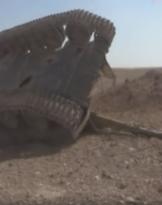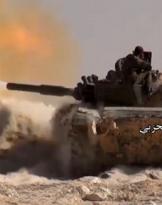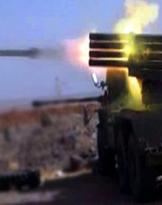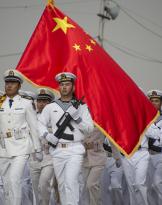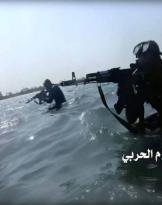News coming from local military sources all converge on one point. While the bulk of media attention is concentrated in the Aleppo area, two other fronts in the central and eastern sector of the country seem decisive in understanding how long the war will be.
Let's proceed with order.
Attention on Aleppo, or Halab as the Arabs say, is relevant to two determining factors: on the one hand the numbers, on the other the eye of international observers who turned the spotlight on the dynamics of the ongoing battle.
On the strategic, economic but above all psychological importance of the Aleppo front we have already said. The main problem around which the 48 hours ceasefire agreement proclaimed by the Syrian General Staff revolves is that the reconquest of the second Syrian city is hampered by hundreds of thousands of inhabitants, effectively shields of Islamist militias.
There is little talk about it, rather badly, putting the actions of the Syrian Armed Forces on an equal footing with the deliberate bombing of inhabited areas by terrorists. The Islamist responsibilities of the attack on the Al Dabbeet hospital on May 3 have been ascertained, but many Western media, in doubt, rummage through the turmoil without helping to understand who is slaughtering who and what.
Also on Tuesday 3 May, militiamen of Al Nusra e Harakat Nouriddeen Al-Zinki (logistically supported by Turkey) they would have stormed the neighborhood of Al Zhara with the help ofFree Syrian Army, which despite being on the list of so-called "moderate" rebels, by the same admission of its former mentor, would now openly fight alongside the Islamists on the west front of Aleppo.
The difficulties of the Syrian army, given the number of civilians involved, would have led Damascus to accept the idea of a ceasefire, in order to leave a possible way out not only for military contacts between Washington and Moscow. However, according to Syrian plans, the war effort would remain the indispensable tool for the reconquest of the entire national territory. Also this week, local military sources speak of Russian artillery involvement just west of Aleppo. It would be the first time of military assistance on the ground of Moscow outside the regions of Latakia and Palmira. 
The situation is fluid but more massacres are announced. While Assad concentrates troops around the great northern city, on the other hundreds of militiamen continue to flow from the Turkish border according to a bizarre logic: many jihadist groups (Al Nusra e Al Zinki in the framework of Aleppo) are supported by Turkey; on the other hand ISIS militiamen would have clashed several times with the Turkish army (the 3 in May there was talk of 58 dead after a Turkish bombardment on the border) fueling the split on the fundamentalist front. Islamic State on the one hand, other Islamist groups on the other.
The figure may appear to be a fortune for the Syria-Russia-Iran-Hezbollah alliance but in reality it opens the door to a confused scenario. In view of the position taken by the Kurds in recent weeks on the north-east sector, at present Syria converges towards a division of the fronts: the risk is a kind of all against all that would bring water to the mill of those who want a country in chaos, more fragmented and less stable as possible.
Greater clarity is given to the other sectors mentioned above.
In early May, the ISIS counteroffensive against loyalist forces took place around the Al Shar gas wells in the eastern region of Homs. The renewed impetus of the Caliphate stems from a smaller amount of territory to be controlled following the defeats of recent months and a consequent greater ability to concentrate troops. On support for the Islamic State and its ability to rotate men at the front we have already talked about this column.
In these hours the reconquest of the Syrian army of Al Shar would be underway, which would have diverted for the occasion from the advance towards Deir Ezzor General Al Hassan (with the inseparable pink camouflage of the Syrian special forces) and his Tiger Forces.
Right on the route of Deir Ezzor, the approach march of the Syrian forces towards the besieged city continues from the west. If the isolation of the city ended, it would be hard for the Caliphate. Only the Raqqa Governorate would remain firm.
The game between political stalemate and the splitting of alliances that become complicated on the ground will bear fruit with all certainty before the summer.
(photo: SAA)


